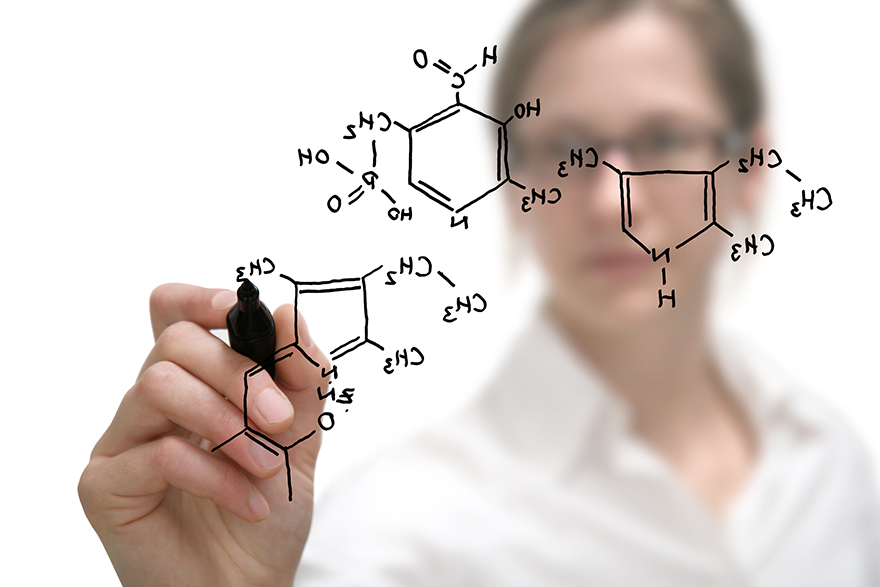Defining and Understanding The Term Organic
According to the USDA “organic labeling is a term that refers to an agricultural product produced in accordance with the ACT and the regulations”. The scientific definition of organic is much more precise, an organic chemical is any chemical that contains both carbon and hydrogen. Any chemical that does not contain these two elements is considered “inorganic”. In nature only living organisms can synthesize “organic” molecules, hence the origin of the term. Plants, algae and some bacteria are able to convert carbon dioxide, an inorganic chemical; into an organic molecule, sugar and this conversion is the basis of all organic molecules. Animals can then eat the plants and modify the chemicals present in the plants to suit their needs. The chemicals made include sugars, fats, proteins, DNA, vitamins. Based on these criteria all plant and animal material is “organic” so there is no such thing as a non-organic apple.
Based on this definition of organic, chemicals such as glyphosate and even DDT are “organics”. Certainly GMO would fall under the category of organic. Technically the issue should not be divided between “organic” and “chemical” but rather between what might be considered a “good “ organic versus a harmful organic. This division leads to the problem of defining what is good and what is harmful. If we use a product that we can find in nature does that guarantee that it is not harmful; clearly not. We know may plants can be poisonous, microorganisms also produce compounds that can cause disease, e.g. tetanus toxin.
Animals also produce chemicals that can be toxic, e. g. snake venom. When considering health or farming we are confronted with two problems, we want to support the growth of some organisms while limiting the growth of others. In farming we want our crops to thrive but not the weeds or insects and microbes that want to consume our crops. We also want certain insects and microbes to thrive since they aid in the health of the crops. All creatures in nature are faced with this same issue. In nature, organisms produce many types of molecules to allow them to survive and compete.
How do we define a good “organic”? Furthermore is the chemical that is good or bad or is it the application of the chemical. An example would be antibiotics. Bacteria produce antibiotics that will harm other bacteria and this is the way they do battle for resources. The vast majority of antibiotics that are pharmaceuticals are either directly obtained from nature or modified in some way to improve their ability to function in our bodies.
Antibiotics when first introduced were proclaimed as miracle drugs. Used in the appropriate setting antibiotics do indeed save lives. However, when used to help fatten up livestock they provide little good and lead to a vast increase in the population of antibiotic resistant bacteria making it harder to treat patients that could benefit from their use. When antibiotics are used to treat the appropriate disease it is good but antibiotics are used to fatten cattle is bad. Pe. A similar story can be told about DTT. When first introduced it was considered a lifesaver, preventing the rapid spread of malaria. The person who developed DDT won the Nobel Prize. As with antibiotics it was over used including situations that were inappropriate.
Its overuse led to it being present in food for wildlife, particularly birds, which led to defects in shells and near extinction of some species. In addition, as with over use of antibiotics, mosquitoes developed resistance to DDT. Stories like these have led some people to jump to the simple conclusions that these sorts of chemicals are bad. A more nuanced conclusion may be that these chemicals have the potential of doing great good when used appropriately and great harm when used inappropriately. The lesson that we should be learning and applying to the use and development of newer products is not that we should give up and return to some sort of idealized perfect past practices that never existed but rather to be more judicious in our use of chemicals and be vigilant of unintended consequences.

